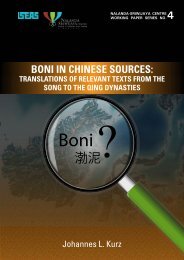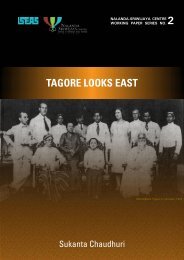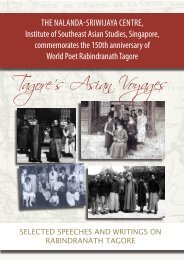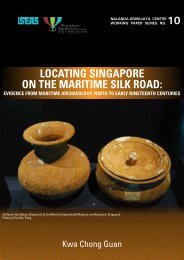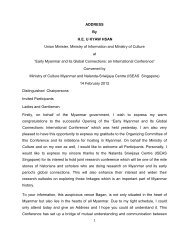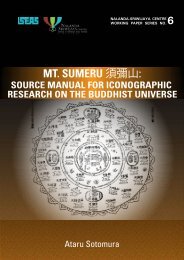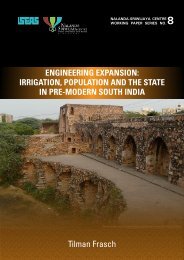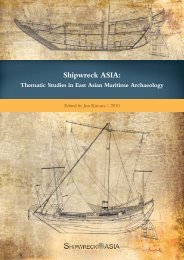provenance research on 14th-century greenwares found in singapore
provenance research on 14th-century greenwares found in singapore
provenance research on 14th-century greenwares found in singapore
You also want an ePaper? Increase the reach of your titles
YUMPU automatically turns print PDFs into web optimized ePapers that Google loves.
Stulemeijer: Provenance Research <strong>on</strong> <strong>14th</strong>-Century Greenwares Found <strong>in</strong> S<strong>in</strong>gapore NSC Work<strong>in</strong>g Paper No. 9<br />
Gigili et al < http://www. geo. vu. nl/archaeometry/abstracts/ceramicsgeneral. pdf > <strong>in</strong> their<br />
paper <strong>on</strong> Italian pottery, tested 67 sherds from the San Francesco Square site <strong>in</strong> Catania,<br />
Italy. EDXRF is employed to identify the chemical signature of earthenwares. The analysis<br />
of the results dem<strong>on</strong>strates that the most important trace elements are Rubidium (Rb),<br />
Str<strong>on</strong>tium (Sr), Yttrium (Y), Zirc<strong>on</strong>ium (Zr), Molybdenum (Mo) and Niobium (Nb). A<br />
multil<strong>in</strong>ear regressi<strong>on</strong> graph used to plot the elements <strong>in</strong>dicated that all the sherds cluster<br />
closely together. Gigili (et.al.) also tested sherds from another site and compared them <strong>in</strong> a<br />
graph together with the sherds from the San Francesco Square site. The results from this<br />
comparis<strong>on</strong> str<strong>on</strong>gly suggest that the sherds from the San Francesco Square site come from<br />
<strong>on</strong>e producti<strong>on</strong> workshop. The trace elements recognized <strong>in</strong> this article are similar to those<br />
identified by Miksic and Yap (1992). This supports the theory by Miksic and Yap (1992) that<br />
these trace elements could identify producti<strong>on</strong> centres and eventually lead to <str<strong>on</strong>g>provenance</str<strong>on</strong>g><br />
recogniti<strong>on</strong>.<br />
Based <strong>on</strong> the above <str<strong>on</strong>g>research</str<strong>on</strong>g>, it is clear that chemical elements with<strong>in</strong> a ceramic object can<br />
be identified and quantified by us<strong>in</strong>g EDXRF. Through analys<strong>in</strong>g these elements, there is a<br />
possibility of dist<strong>in</strong>guish<strong>in</strong>g between different ceramic producti<strong>on</strong> sites. N<strong>on</strong>etheless, more<br />
such <str<strong>on</strong>g>research</str<strong>on</strong>g> <strong>on</strong> ceramics and its source materials must be c<strong>on</strong>ducted before <str<strong>on</strong>g>provenance</str<strong>on</strong>g><br />
can be established. Other scientific methods for <str<strong>on</strong>g>provenance</str<strong>on</strong>g> <str<strong>on</strong>g>research</str<strong>on</strong>g> have been employed<br />
and are at least as successful as EDXRF. Earlier, <strong>in</strong> this paper, these methods have been<br />
described and dismissed for relevant reas<strong>on</strong>s.<br />
30





